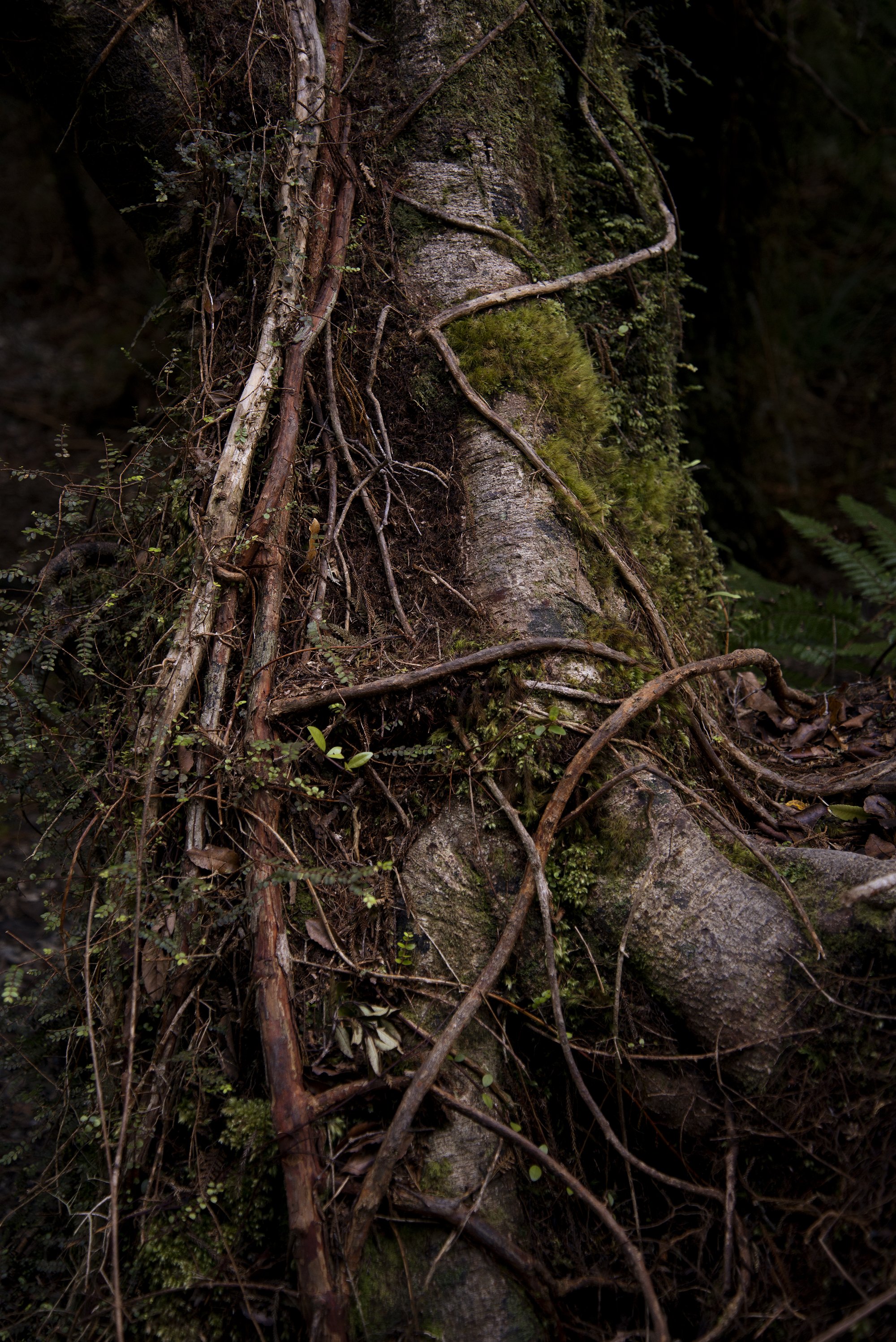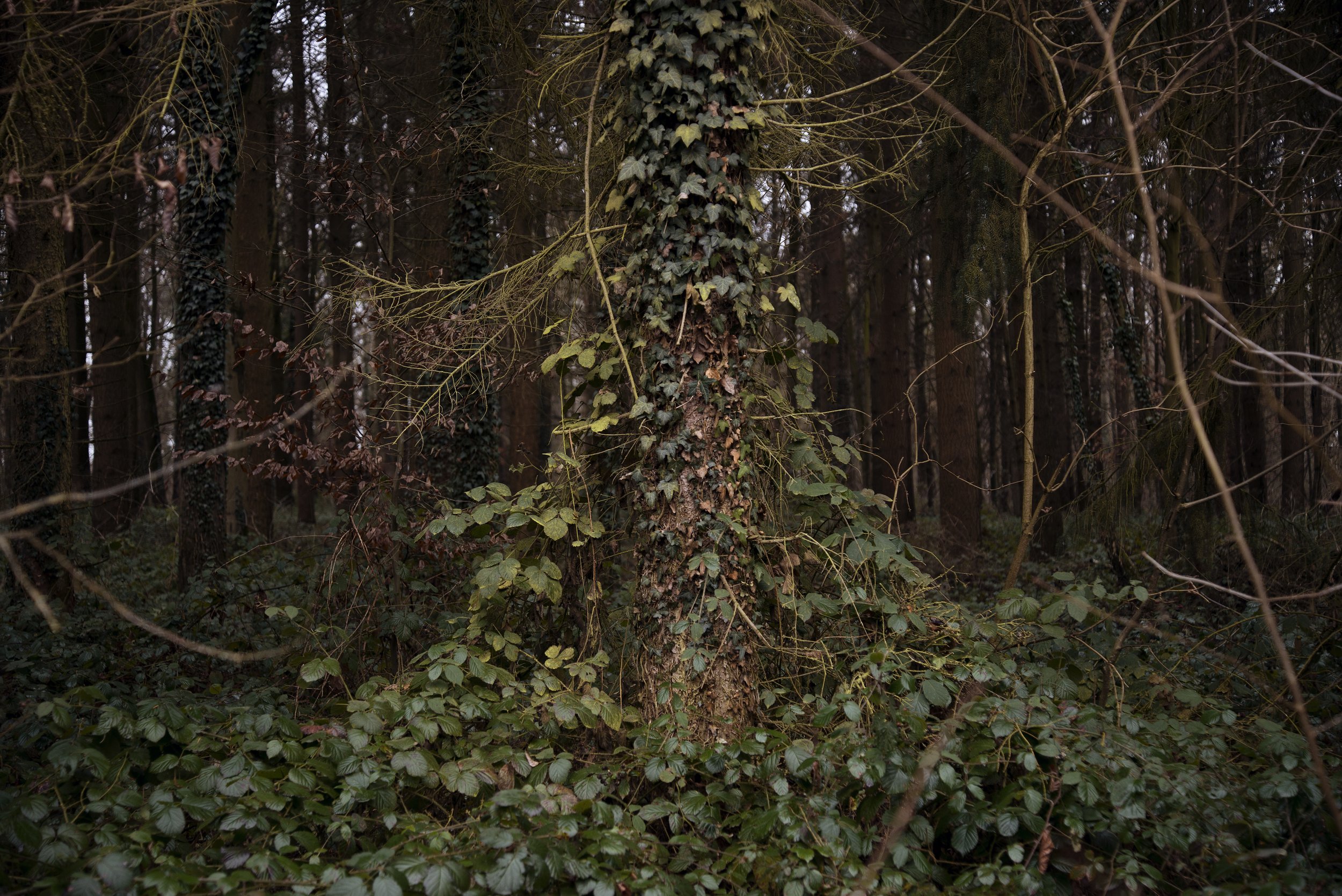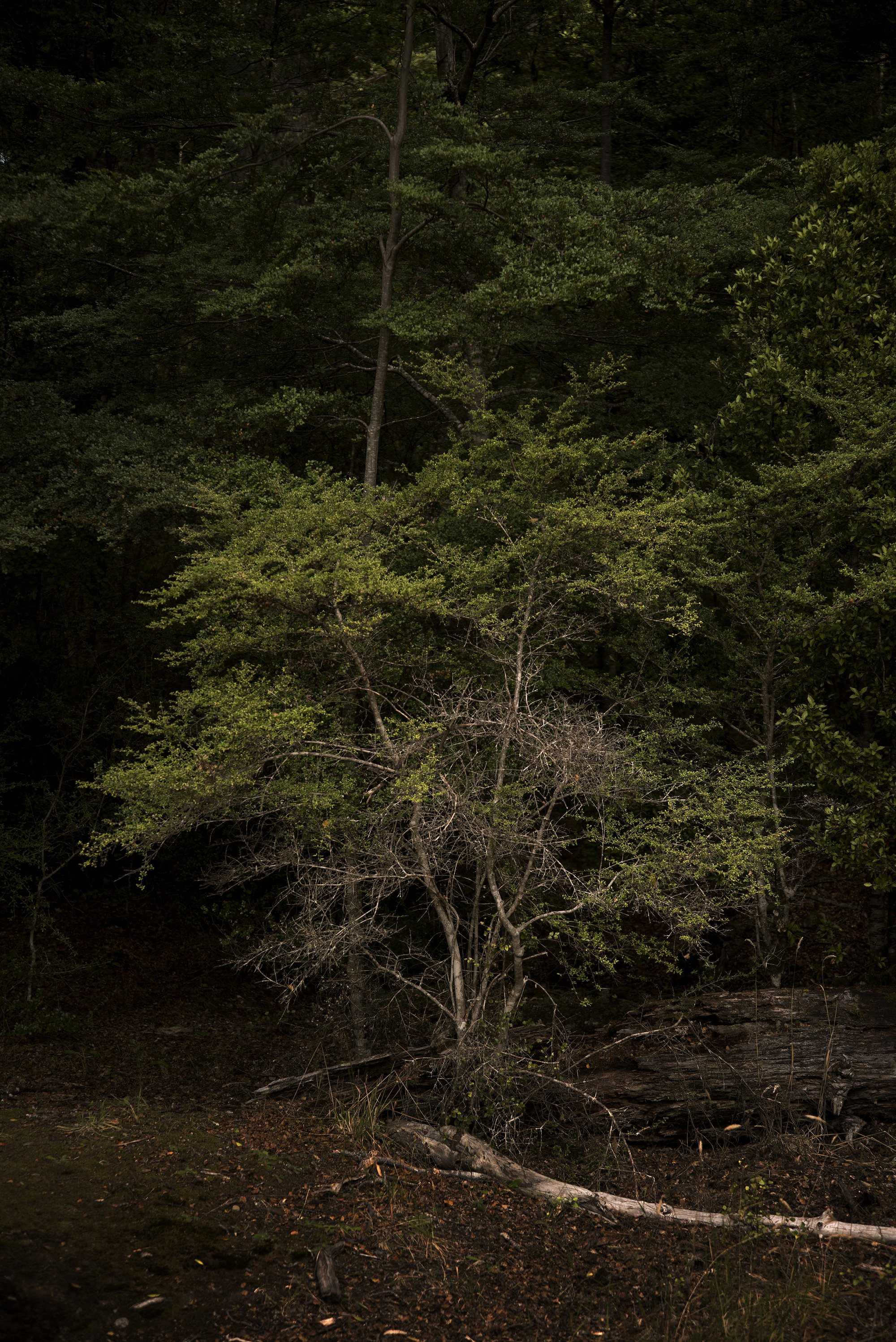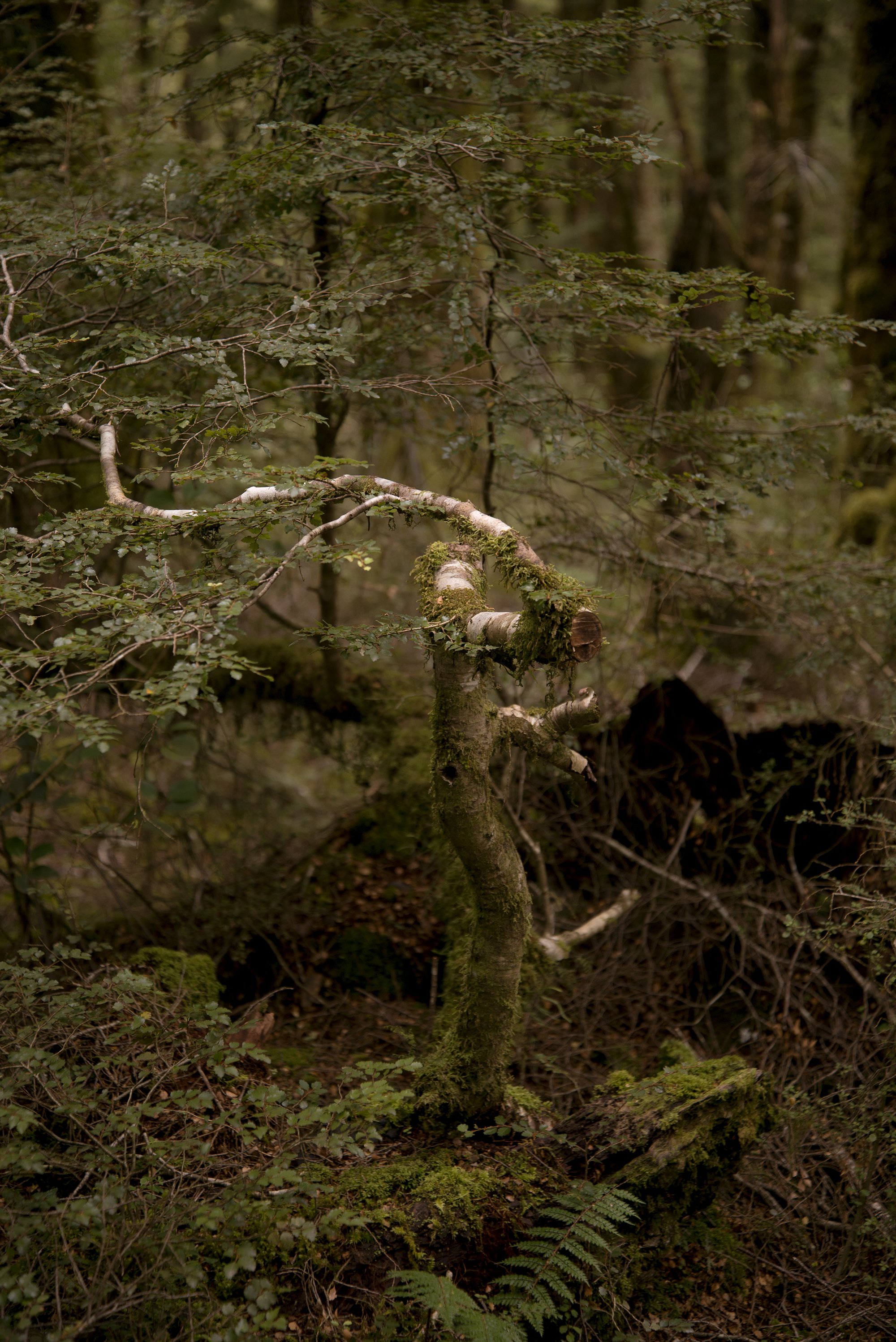
Connected Earth
The Trees
(M)ost individual trees of the same species growing in the same stand are connected to each other through their root systems. It appears that nutrient exchange and helping neighbors in times of need is the rule, and this leads to the conclusion that forests are superorganisms with interconnections much like ant colonies.
—The Hidden Life of Trees, Peter Wohlleben

The wood wide web has been mapped, traced, monitored, and coaxed to reveal the beautiful structures and finely adapted languages of the forest network. We have learned that mother trees recognize and talk with their kin, shaping future generations. In addition, injured trees pass their legacies on to their neighbors, affecting gene regulation, defense chemistry, and resilience in the forest community. These discoveries have transformed our understanding of trees from competitive crusaders of the self to members of a connected, relating, communicating system.
—Dr. Suzanne Simard, Note from a Forest Scientist, In book: The Hidden Life of Trees, Peter Wohlleben

A network, once established, might be called an individual. But this individual’s character is defined by a collection of relationships, not by the stable presence of any particular molecular identity or genetic code. The particularities of relationships change over time (...) but the network lasts and is the essence of the life-form. So life has a contradictory, creative duality in its nature: it is atom or network; it is neither or both. This is not a question of metaphor; it is life’s fundamental character. Life straddles two states of existence and thereby animates what was a dead universe.
—The Song of Trees, David George Haskell
Perhaps such a search for individuals, for the “units” of biology, is misguided. The fundamental nature of life may be not atomistic but relational. The essence of the (...) community is the network of interactions, not the collection of selves.
—The Song of Trees, David George Haskell

For out there under the trees, the law of the jungle rules. Every species wants to survive, and each takes from the others what it needs. All are basically ruthless, and the only reason everything doesn’t collapse is because there are safeguards against those who demand more than their due. And one final limitation is an organism’s own genetics: an organism that is too greedy and takes too much without giving anything in return destroys what it needs for life and dies out.
—The Hidden Life of Trees, Peter Wohlleben
The less integrated the tree is in a community of its own species, the greater the danger. Loners standing unprotected out in the cold fog succumb markedly more often than well-connected individuals in a dense forest who can lean on their neighbors for support.
—The Hidden Life of Trees, Peter Wohlleben
But like all trees, the fir’s separation is also an illusion, seen only when we tilt our head one way. Every needle and root is a composite of plant, bacterial, and fungal cells, a weave that cannot be unknotted.
The fir tree’s life is relationship. Tilting our heads away from the atom, it seems that life is not just networked; it is network.
—The Song of Trees, David George Haskell














